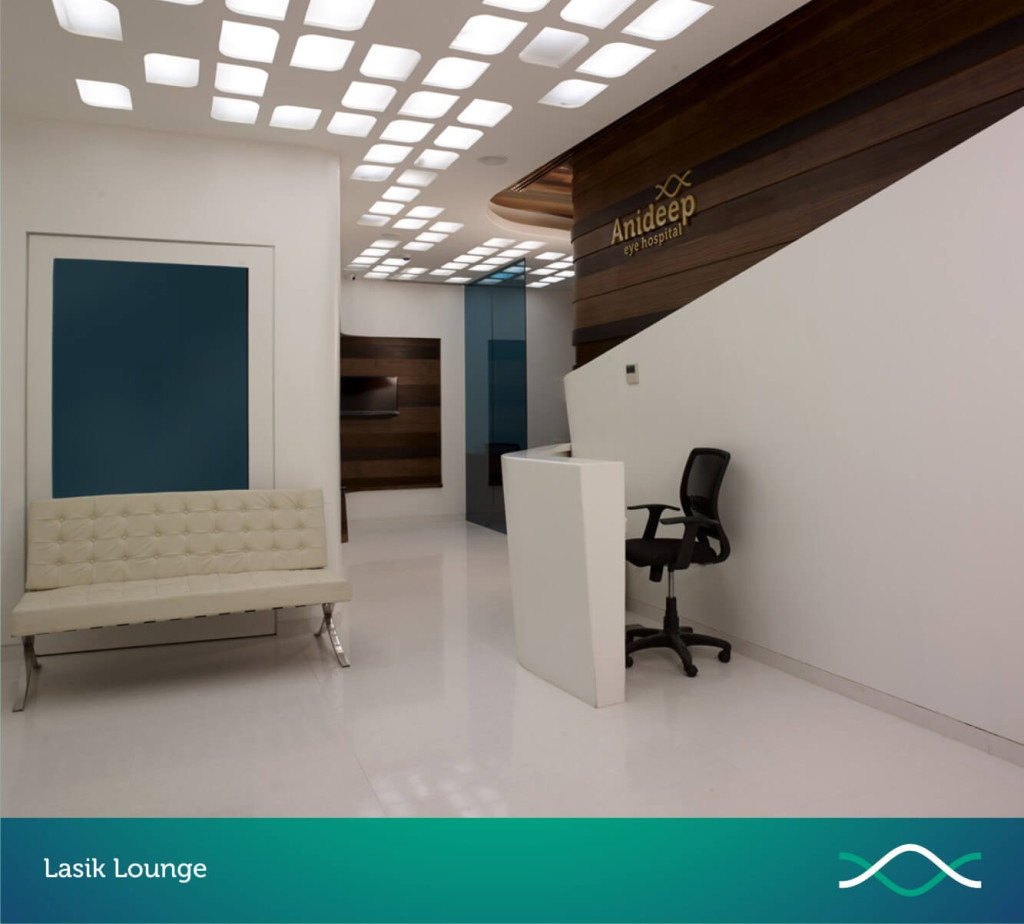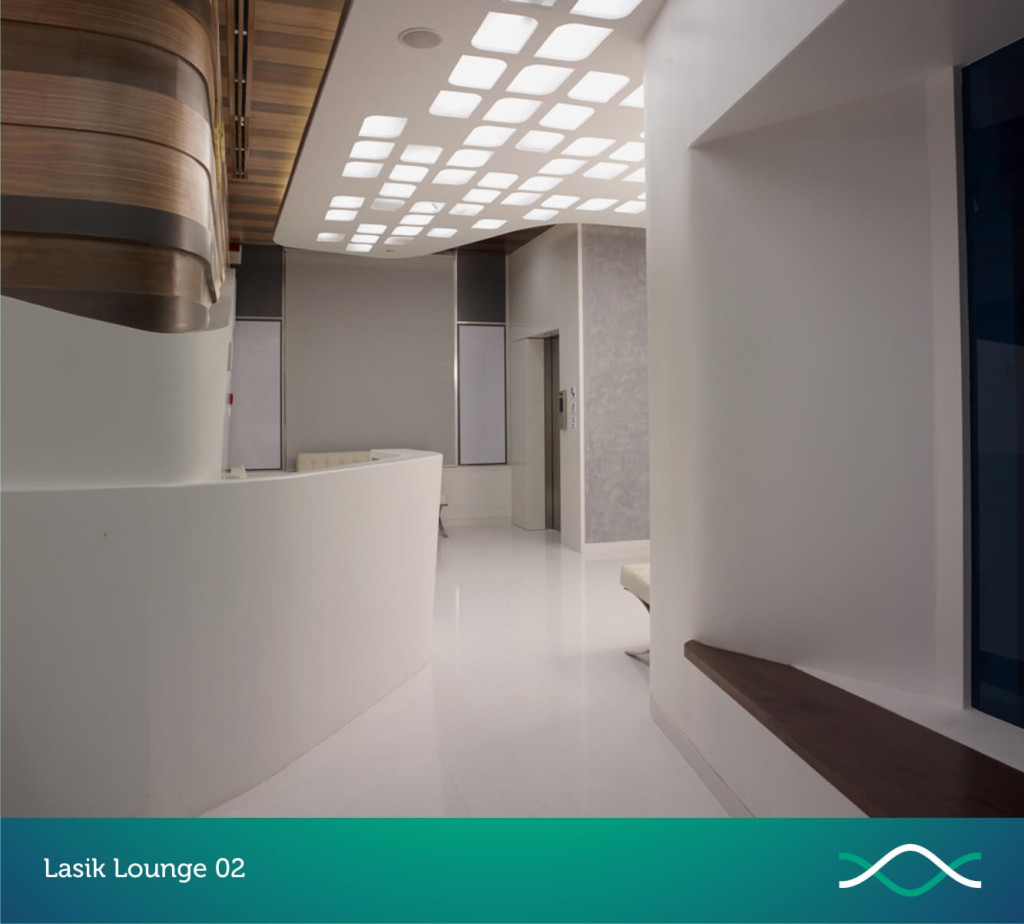Glasses or Contact lenses are designed to compensate for the eye’s imperfections.
Surgical procedures aimed at improving the focusing power of the eye are called Refractive procedures.
In LASIK procedure, precise and controlled removal of corneal tissue by a special laser reshapes the cornea, thus changing its focusing power.
Click on points to know more about Eye structure and LASIK :
Structure of the Human Eye
The Cornea is a part of the eye that helps focus light to create an image on the retina. It works in much the same way that the lens of a camera focuses light to create an image on film. The bending and focusing of light is known as refraction. When the light rays come to a perfect focus on the retina, the individual does not need glasses.
What are Refractive Errors?
However, sometimes the rays of light do not come to a focus on the retina. These imperfections in the focusing power of the eye are called refractive errors.
There are three primary types of refractive errors:
- MYOPIA:
Persons with myopia or nearsightedness have more difficulty seeing distant objects compared to near objects. The rays of light come to a focus in front of the retina.
- HYERMETROPIA:
Persons with hypermetropia, or farsightedness, have more difficulty seeing near objects compared to distant objects. The rays of light come to a focus behind the retina.
- ASTIGMATISM:
Astigmatism is a distortion of the image on the retina caused by irregularities in the cornea or lens of the eye. Combinations of myopia and astigmatism or myopia and astigmatism or hyperopia and astigmatism are common. This is also referred to as a compound number.
Glasses or Contact lenses are designed to compensate for the eye’s imperfections.
Surgical procedures aimed at improving the focusing power of the eye are called Refractive procedures.
In LASIK procedure, precise and controlled removal of corneal tissue by a special laser reshapes the cornea, thus changing its focusing power.
- Other Types of Refractive Procedures
- Radial Keratotomy or RK and Photorefractive Keratectomy or PRK are other refractive procedures used to reshape the cornea.
- In RK (not done any more now), a very sharp knife is used to cut slits in the cornea changing its shape. PRK was the first surgical procedure developed to reshape the cornea, by sculpting, using a laser.
- Later, LASIK was developed. The same type of laser is used for both LASIK and PRK.
Are You a Good Candidate for LASIK?
You are a good candidate for LASIK if –
- There is no constant change of number (usually, above 18yrs. For females & 20 – 21years for males)
- Hormonal levels are not fluctuating (cases of diabetes, pregnancy, etc.)
In short, LASIK is done on eyes where the refractive error is STABLE
In addition, if you are having any of the following conditions, you need to inform your doctor about it.
- Viral infections (Herpes simplex or Herpes zoster) involving the eye area
- Glaucoma, glaucoma suspect
- Eye diseases, such as uveitis / iritis (inflammations of the eye)
- Eye injuries or previous eye surgeries.
What are the Possible Drawbacks of LASIK?
Most Patients are very pleased with the results of LASIK .However, like any other surgical procedure, there are possible risks involved. That’s why it is important for you to understand the limitations and possible drawbacks of LASIK.
- UNDERCORRECTION / OVERCORRECTION
The aim of the procedure is to reduce your dependency on glasses. Everything depends upon how the healing takes place after the procedure – sometimes this healing can induce a small number.
Usually this number is small, and the patient will not be required to
Wear glasses for most of his / her daily activities. If you are using reading glasses before LASIK (if you are above 35 years) you may still need glasses after LASIK.
- DRY EYE SYMPTOMS
Tear secretion is reduced in the postoperative period (dry eye).This is expected to revert back to normal usually over a period of 2 – 3 months.
Dry eye not only causes discomfort (burning sensation especially in dry climate, but can also reduce visual quality due to intermittent blurring due to tear film instability. This condition is more often seen in
- Patients who are using contact lenses over a long period.
- Patients who will need to work on computers for long hours.
- Women after 45 Years of age (perimenopausal age group)
- NIGHT GLARE / HALOES
Glare and haloes (especially in dark) are sometimes experienced by patients after undergoing Lasik. These are usually temporary and are expected to come back to normal within a period of about 3 – 4months.
For some farsighted patients, results may diminish with age.If youare farsighted (having a plus number), the level of improved vision you experience after LASIK may decrease with age.
LASIK Evaluation (Screening)
Prior to LASIK evaluation, you will need to discontinue the use of contact lenses as under:
- Soft Contact Lenses ; – discontinue wear for at least 48 – 72 hours
- Rigid Gas permeable (RGP) lenses, discontinue wear for 15 days
The LASIK evaluation which takes around 2 to 3 hours includes special tests like:
- Corneal topography – to evaluate the shape of the corneal surface
- Pachymetry – to measure the thickness of the Cornea
- Dilated retinal evaluation
You should tell your Doctor:
- About your past and present medical and eye conditions
- About all the medications you are taking, including over the counter
- Medications you may be allergic to.
Pre Lasik Preparation
The day before the procedure, you should stop using:
- Creams, Lotions, Make up, Perfumes, Deodorants and other Body sprays as they may interfere with laser beam.
LASIK Procedure
The Procedure usually takes about half an hour for both eyes together. Anaesthetic drops will be put in your eye, and an instrument called a lid speculum will be used to hold your eyelids open. No subjects of any sortare given and you will not feel any pain, although some discomfort may be felt.
A ring will be placed on your eye and pressure will be applied to create suction. Your vision will dim while the suction ring is on and you may feel the pressure and experience some discomfort dug this part of the procedure. Your doctor will use the blade of the microkeratome to cut a
Flap in your cornea. The microkeratome and the suction ring are then removed. You will be able to see, but you will experience fluctuating degrees of blurred vision during the rest of the procedure. The doctor will then lift the flap and fold it back on its hinge, and dry the exposed tissue.
The laser beam will then be focused over your eye and you will be asked to stare at a rec blinking light. This light is to help you keep your eye fixed on one spot once the laser comes on. It is important to keep starting at this light (usually for about a minute) for accurate results.
The pulse of the laser makes a ticking sound. As the laser removes corneal tissue, you may experience a smell similar to that of burning hair. A computer controls the amount of laser energy delivered to your eye. After the pulses of laser energy reshape the corneal tissue, the flap is put back into position.
A shield will be placed over your eye at the end of the procedure as protection, since no stitches are used to hold the flap in place. It is important for you to wear this shield to prevent you from rubbing your eye and putting pressure on your eye while you sleep, and to protect your eye from accidentally being hit or poked until the flap has healed.
Common Symptoms After LASIK
- Burning
- Redness
- Heaviness
- Itching
- Foreign body sensation
You will instinctively want to rub your eye, but don’t! Rubbing your eye could dislodge the flap, requiring further treatment. In addition, you may experience sensitivity to light, glare, starbursts or haloes around lights. These symptoms should improve considerably within the first few days after surgery. Usually within 3 – 4 days’ time good vision is attained the patient can resume most of his / her routine activities.
Good practices to follow before and after LASIK
- No eye Make-up
- No non – Contact Sports
- No Strenuous or contact sports
- Wear eye shield at night
- No swimming, whirlpool or hot tub
What to expect after LASIK
- Mild pain & discomfort
- Burning or scratchiness
- Tearing or watery Eyes
- Sensitivity to light
- Hazy or blurred vision
- Dry eyes
- Glare, difficulty driving at night
- Fluctuations in vision
Conversation between LASIK candidate and ophthalmologist
- Can the number for reading glasses /near vision (presbyopia) be treated by this method?
Most of us need reading glasses around the age of 40. Elimination of this type of spectacle number is being worked out in various research laboratories. As of today, presbyopia cannot be corrected by laser procedure. All patients who have been operated for refractive surgery will get presbyopia glasses due to normal aging process. However, Presbyopia can be taken care of by using the concept of ‘Monovision’ where one eye is corrected for distance vision and the other for near vision.
- Will I Ever need Glasses?
The goal of LASIK is to improve vision to the point of reducing your dependence on glasses. If a small degree of refractive error perisists after the procedure, a treatment (enhancement procedure) can be done, in selected cases.
- Will my refractive error revert to the original over a period of time?
The chances of regression are almost nil by this (LASIK) procedure but, if it occurs, it can be retreated.
- Both eyes or one eye in the same sitting?
Generally both eyes are treated at the same sitting which is more convenient & least disruptive to the patient’s work & lifestyle. It may be done separately if some problem is expected or encountered. In very anxious / nervous patients, one eye is done at a time.
- What is the duration of the procedure?
The procedure itself takes only about 10 minutes per eye but you may have to stay in the hospital for about 1/2 – 1 hour.
- When can I resume duties?
Duties can be resumed within 24-48 hours.
- How safe is the procedure?
It is a reasonably safe procedure. Problems, if at all they occur are minor and not visually significant. LASIK does not always crate 6/6 (20/20) vision. Corneal flap risks include irregular corneal flap, short or incomplete corneal flap, etc. which may lead to astigmatism.
Lasik Associates
- Dr. Shashi Kapoor
- Dr. Subramanium Sharma
- Dr. Yogesh Shah
- Dr. Janak Shah
- Dr. Preeti Shah
- Dr. Sangeeta Raut
- Dr. Nilesh Panchal
- Dr. Kareeshma Wadia
- Dr. Suvira Jain
- Dr. Anand Raut
- Dr. Girish Herekar
- Dr. Hardik Parikh
- Dr. Nikhil Nasta
- Dr. Sheetal Saraf
- Dr. Preeti Shah








